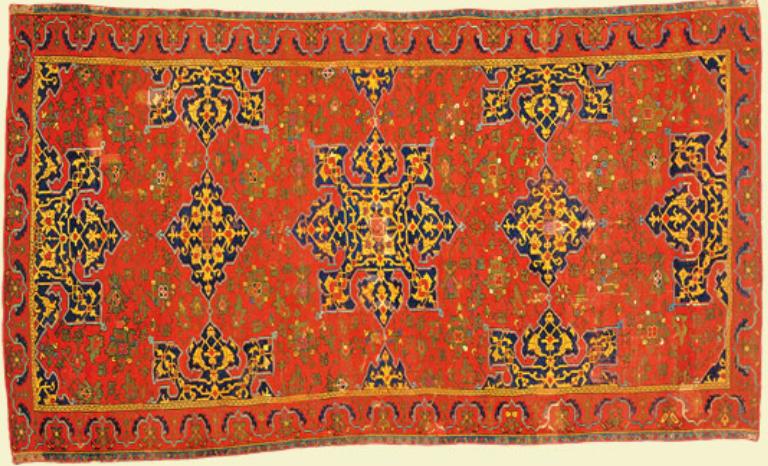Islamic Carpet Ottoman Niche Design

Indeed european paintings are a primary source for scholarship on early carpets and many groups of islamic carpets from the middle east are today called by the names of european painters who.
Islamic carpet ottoman niche design. Anatolian rug is a term of convenience commonly used today to denote rugs and carpets woven in anatolia or asia minor and its adjacent regions geographically its area of production can be compared to the territories which were historically dominated by the ottoman empire it denotes a knotted pile woven floor or wall covering which is produced for home use local sale and export. The spread of islam and the advent of islamic art and the islamic carpets is one of those events that contributed to the beautiful patterns and colors that we enjoy today. One of the earliest carpets to include a triple arched gateway its design probably originated in the ottoman imperial workshop. Its core is formed by classical output from the 16th and 17th centuries during which the great islamic realms of the ottomans safavids and mughals experienced their golden ages.
The niche itself shows design types also known from ottoman prayer rugs from anatolia. The popularity of what we call oriental carpets pile woven carpets from the islamic world in europe from the fourteenth century onward is reflected in their frequent depiction in european paintings. Islamic art and islamic carpets in history. Throughout history certain events left their mark on the development of the carpet industry and design.
The similarities of the design with their anatolian counterparts has led to the attribution of specific transylvanian carpets to more specific anatolian. Although the sizes vary most rugs are just sufficient for an average man to fit during the acts and antics of prayer. The head and shoulder design high or low point of the arch and with serrated or stepped outlines. Carpet and interior of the harem room in topkapi palace istanbul.
Persian carpets the iranian safavid empire 1501 1786 is distinguished from the mughal and ottoman dynasties by the shia faith of its shahs which was the majority islamic. Although the patterns on islamic carpets have no specific meanings they do reflect a specifically muslim worldview. In addition to pieces from the islamic world the mak is also home to a group of high quality 18th century carpets from the savonnerie manufactory in france. On the first look prayer carpets resemble oriental rugs or even persian rugs.
The ottoman turks were famed for the quality of their finely woven and intricately knotted silk carpets. A 1914 carpet exhibit in budapest included 354 antique turkish rugs of the lot 228 had a provenance traced back to transylvania. Starting in the 16th century the safavid ottoman and mughal dynasties transformed carpet weaving which until then was a cottage industry based in small villages into a fine art and major export to europe and asia. The hanging lamp in the center arch recalls verses from the qur an that liken god to the light of a lamp placed within a niche.
During these early years cash strapped parishes sometimes took advantage of rising popularity of such items and.












































